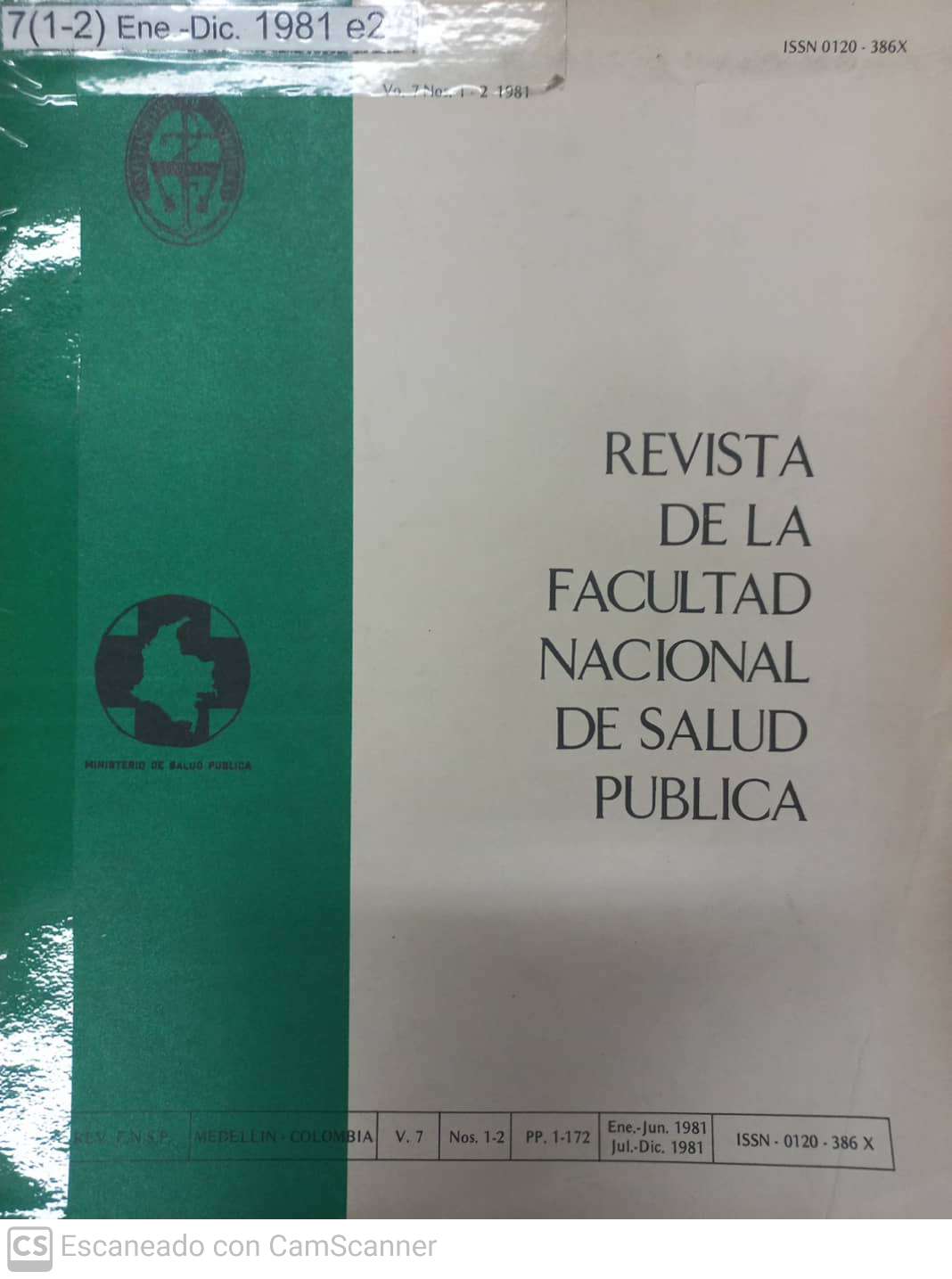ERGONOMIA Y SU INCIDENCIA EN LA PREVENCIÓN DE ACCIDENTES
Abstract
Etymologically, Ergonomics comes from the Greek words Ergo (work) and Gnomos (knowledge), i.e. it tries to identify the studies carried out on work. It is a neologism created by the English psychologist K.F. Murrel, in 1949, to distinguish an area of knowledge generated in the 1930s at the Max Plank Institute in Leipzig and which initially referred to the philosophy of work, but which by 1949 had already transcended this framework to cover a number of facets that merited a conceptual expansion with respect to what had initially been contemplated.
It is always difficult to try to give a definition, necessarily brief, of a discipline of human knowledge. However, for Ergonomics there is a definition, universally accepted and recently ratified at the 5th World Congress of Ergonomics, held in Wageningen, The Netherlands, in May 1979, such definition reads:
“Ergonomics is a science that studies and optimizes man-machine systems, seeking the adaptation of the machine to man, preserving the latter in his health and dignity and, given these assumptions, seeking maximum joint efficiency.”
It is worth noting the inevitable density of ideas contained in so few words. It is relevant to emphasize the following concepts:
Translated with DeepL.com (free version)
Downloads
References
Aguirre M., John Jairo, Estrada M. Jairo y Pérez Miguel H.: Estudio ergonómico y ambiental en trabajos con altas cargas de calor. Proyecto de grado. Medellín, Universidad Nacional, 1977.
Aristizábal C., León Jaime: La industria de la construcción: realizaciones y proyecciones. Medellín, 1967.
Astrand, P. O. and RODAHL, K. Textbook of work physiology. New York, 1970.
Barnes, R. M. Motion and time study. New York, 1958.
Bejarano, Jorge: Alimentación y nutrición en Colombia. Bogotá, 1950.
Bernard, Charles P.: Ergonomic, Hygiene et securité. 10 ed., París, 1977.
Betancur H., Lucía y Sanchez C., Marley: Estudio ergonómico del trabajo en el área de la construcción. Proyecto de grado. Medellín, Universidad Nacional, 1979.
Carpentier, J.: Técnicas de organización y de humanización del trabajo. Revista Internacional del Trabajo, agosto 1974.
Chapanis, A., et al: Applied experimental Psichology. New York, 1963.
Edholm, O.G. The biology work. Milán, 1967.
Forcadas, Jorge: Curso sobre ergonomia. 3 ed. Medellín. ASIDUA, 1980.
Gómez, Pedro Nel: Curso de construcción. Medellín, Universidad Nacional, 1973.
Hanoteau, P. et al: Prevención de accidentes en la construcción. Barcelona, Blume 1967.
Hutle: Manual del ingeniero. Barcelona, Gili, 1958, v. 2.
Hutle: Manuel del Ingeniero del taller. Barcelona, Gili, 1962, v. 2.
Instituto de Seguros Sociales Sección Salud Ocupacional: Principales problemas en la prevención de los riesgos profesionales en la industria de la construcción. Bogotá, III Congreso Interamericano de Prevención de Riesgos Profesionales, 1969.
Kapland, Juan: Medicina del trabajo. Buenos Aires, Ateneo, 1970.
Kellerman, F. et al: Vademecum ergonomie voor de industrie. Eidhoren, 1965.
Medellín, Empresas Públicas: Normas generales de seguridad para la industria de la construcción. Medellín, 1967.
Morgan, C.T. et al: Human engineeering guide for equipment design. New York, 1963.
Murrell, KFH: Ergonomics. Londres, 1965.
Sarmiento L., Guillermo: Medicina del trabajo. Bogotá, Lerner, 1962.
Yepes P., Olga; Ramírez L., Jairo y Ramírez N., Eduardo N.: Análisis ergonómico de dos oficios. Proyecto de grado. Medellín, Universidad Nacional, 1977.
Zander, J. Ergonomics in machine design. Wageningen, 1972.
Zander, J. Principles of ergonomics. Wageningen, 1973.
Downloads
Published
How to Cite
Issue
Section
License
Copyright (c) 2024 Jorge Forcadas

This work is licensed under a Creative Commons Attribution-NonCommercial-ShareAlike 4.0 International License.
The contents of the articles are the responsibility of the authors
The editorial committee has editorial independence from the National School of Public Health "Héctor Abad Gómez" of the University of Antioquia.
The editorial committee is not responsible for aspects related to copying, plagiarism or fraud that may appear in the articles published in it.
When you are going to reproduce and disclose photographs or personal data in printed or digital format, informed consent is required. Therefore, this requirement is required of the author at the time of receipt of the manuscript.
Authors are responsible for obtaining the necessary permissions to reproduce any material protected by reproduction rights.
The authors preserve the moral rights and assign the economic rights that will correspond to the University of Antioquia, to publish it, distribute electronic copies, include them in indexing services, directories or national and international databases in Open Access, under the Creative Commons Attribution license -Not Commercial-Share Equal 4.0 International Commercial (CC BY-NC-SA) which allows others to distribute, remix, retouch, and create from the work in a non-commercial way, as long as the respective credit and license are granted. new creations under the same conditions.
The authors will sign the declaration of transfer of economic rights to the University of Antioquia, after the acceptance of the manuscript.
The editorial committee reserves the right to reject the articles whose authors do not offer satisfactory explanations about the contribution of each author, to meet the criteria of authorship in the submission letter. All authors must meet the four criteria of authorship according to ICMJE: "a) .- That there is a substantial contribution to the conception or design of the article or to the acquisition, analysis or interpretation of the data. b) That they have participated in the design of the research work or in the critical review of its intellectual content. c) .- That has been intervened in the approval of the final version that will be published.d). That they have the capacity to respond to all aspects of the article in order to ensure that issues related to the accuracy or integrity of any part of the work are adequately investigated and resolved. "








 --
--  --
--
